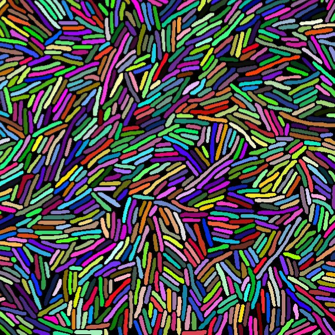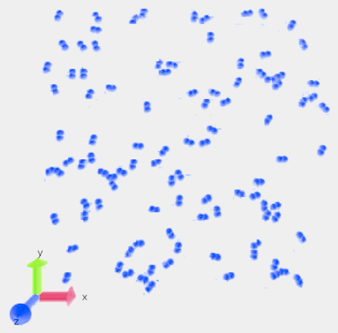2024
Internship co-advisors: Maxime Deforet (LJP) and Pierre Illien (PHENIX).
Contact: maxime.deforet@sorbonne-universite.fr
Swimming bacteria are a good experimental model system to study the emergence of collective motility. In the case of rod-shaped bacteria, cell-cell interactions naturally lead to cellular alignment, and as the density increases, long-range ordering emerges (Figure 1). We have been studying the behaviour of the bacterium Pseudomonas aeruginosa across all scales. At the macroscopic scale, a branched colony forms in 24 hours. At the microscopic scale, we have observed diverse behaviours: nematic alignment, active turbulence, and glass transition.
An individual cell swims at 50 μm/s, alternately forward and backward (run-reverse pattern). A dense population of cells exhibit complex and rapid motion, which we capture at 100 frames per second. Thanks to a recently developed deep-learning method, we are capable of segmenting and tracking all cells swimming in a 2D setting with virtually no error.
By using genetic modification, we can alter some biological parameters and experimentally test how cellular properties translate into large-scale dynamics. However, other parameters cannot be controlled in experiments. This internship aims to use into numerical simulations to understand the role of these parameters, and to confirm the results using experiments. We will perform Brownian dynamics simulations, using the package LAMMPS (Figure 2), to explore the role of parameters at play in this system, such as cell size distribution, cell swimming pattern, cell density.
The ratio experiments/simulations during this internship can be discussed, starting from a 50/50 basis, considering the student's preferences and the project's interests.

Figure 1 – Average cell length is one of the experimentally available parameters. In dense phase, long cells form nematic alignments. The figure is an example of segmented and tracked experimental data
.
Figure 2 – Preliminary simulations for micro-swimmers using the LAMMPS framework.









